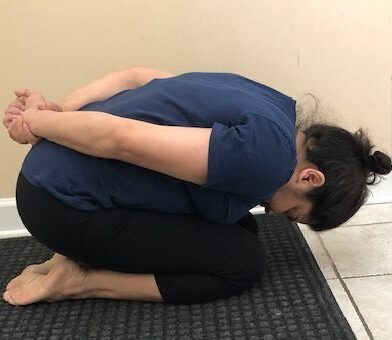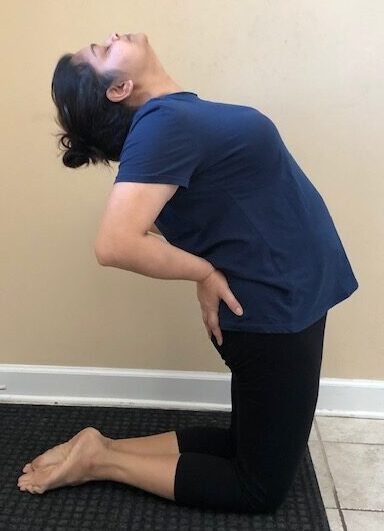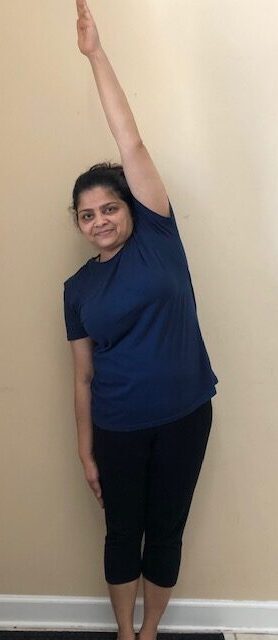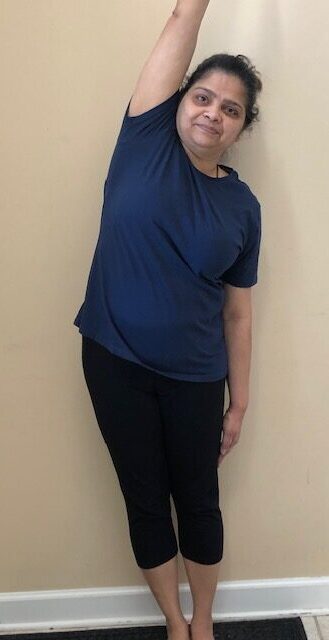Very happy to share the second blog of my series ‘How to stay calm, during and after, stressful moments’. In this blog, I would be sharing a technique developed by my yoga guru Dr. H. R. Nagendra, Chairman of Vivekananda Yoga University located in LA, California, USA, who is also the Chancellor of Svyasa, yoga research Institute located in Bengaluru, India. Through evidence-based research, he has proved that this 30-minute routine, called CYCLIC MEDITATION, enhances positive health to a great extent. Whereas six hours of good sleep reduces metabolic rate by 9%, this routine reduces metabolic rate by 32%. These detailed steps would help you practice this routine as per your convenience or with me in my online class.
This is a safe technique that can be performed by anyone irrespective of energy level, preconditions of health, age, etc. Slow movements and complete awareness of mind are the key factors in this exercise set. This technique is divided in 6 parts for easy understanding.
Part 1:
- Lie down on the yoga mat on your back, inhaling deeply, stretch your leg muscles.
- Maintain the stretch, exhaling deeply, pull your abdominal muscles.
- Maintain the pull, again inhaling deeply, stretch your arm muscles, expand your chest muscles, squeeze your facial muscles.
- Then with a sudden exhale, let go the entire body down to the yoga mat.
- Now with a gentle inhale, chant the aaa sound and enjoy vibrations of the sound.
- Feel the surface awareness of your entire body on the mat. With this instant relaxation process of just two deep breathing rounds, you have helped release any muscle holds, contractions, spasms. You have brought yourself in your yoga room not just at body level but even at mind level.
Part 2:
- Slowly getting up from the mat, perform one simple yoga pose namely Ardhakatichakrasana or Half wheel pose. The key is in going into the pose very slowly and mindfully by paying attention to the changes happening in the nerve impulses, blood circulation pattern and heaviness of the muscles while lifting the arm up and then bending the torse sideways.
- Feel the pointed awareness around your heels and toes. Feel the linear awareness around outer sides of your feet. While maintaining the side bend, pay attention to the folds on one side of torso and stretch on opposite side of the torso.
- Now gently come out of the pose again paying attention to the changes happening around the shoulder, arm, torso. Balance the body by performing the same pose with the other arm. You have stimulated your sympathetic nervous system.
Part 3:
- Now again lie down on mat on your back.
- Simply pay attention to the abdominal movements during the natural breathing rounds. Slowly start pushing the abdominal wall out during every inhale and simply observe the slow sinking of abdominal wall as you exhale.
- After a few breathing rounds, again gently inhale and chant aaa sound and enjoy the resonance of the sound. With this quick relaxation process of a few deep breathing rounds, you have stimulated your parasympathetic nervous system and given relaxation to cells, muscles, and mind.
Part 4:
- Slowly getting up from the mat, perform Shashankasana or Rabbit pose. Follow the same method as mentioned in point 2 above. You have given deep forward bend to the spine, but your legs were bent at the knees, so your lower back is safe.
- Feel the surface awareness as your forehead rests on the mat, your abdomen and chest rest on the thigh. Pay attention to the blood flowing towards head.
- After a gentle inhale, chant humming bee sound. enjoy the resonance of sound in your head region.
- Feel the heart beats and have a 3D awareness throughout your body. After a few breaths, slowly raise the torso up and come out of the pose.

Part 5:
- Now balance the body by going into gentle backward bend of Ardha-ushtrasana or Half camel pose following same method as point 2 above. Feel the expansion of chest, activation of throat region, stretching of abdominal wall, relaxed neck muscles as the head hangs freely down.
- Take a gentle inhale, chant aaa sound and enjoy the vibrations. After a few breaths, come out of the backward bend of spine. Feel the nerve impulses, feel the heart beats. During the process, you have stimulated your sympathetic nervous system again.

Part 6:
- One last time lie down on mat on your back. Spend some ten minutes in this position. Imagine, you are exhaling through one body part each time and relaxing it. After mentally travelling through all parts from toes to head, just pay attention to rhythmic movement of your chest and abdomen along with the breath.
- Now imagine, with every exhale, along with the carbon dioxide, you are throwing out any anger, pain, sorrow, fatigue, ego, fear, hatred, jealousy, lethargy. Imagine, with each inhale, along with the air intake, you are taking in the joy, serenity, peace, happiness, forgiveness, contentment. Take a gentle inhale, chant aaa sound and enjoy the vibrations. With this deep relaxation process, you are giving further deep relaxation to all your muscles, cells, organs, glands, and nerves.
During the 30-minute routine, you have enhanced the sense of perception of your sensory organs, expanded your awareness throughout the body. As you repeat this exercise few times a week, the training will come handy while handing stressors. While the sympathetic nervous system is taking care of the stressors, the muscles will remain in deep relaxation, breath will not go haphazard, heart beats will not lose their rhythm, mind will remain calm.
Thank you for reading! Special thanks to Deepali Kale for yoga poses.
Join me to practice this technique, on March 28, at 9 am CST. I look forward to seeing you. The nominal fee for this session is $10 and 50% of it will be donated to Svyasa yoga research institute.
As always, my goal is to enrich everyone’s life with yoga.
Anu Buzruk





